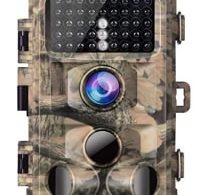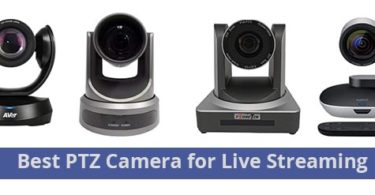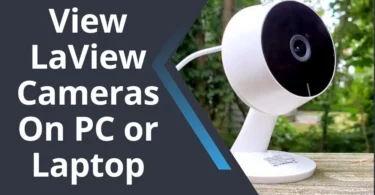As an Amazon Associate, I can earn from qualifying purchases. Learn more.
One of the ways to enjoy crisp and effective surveillance is to figure out how to keep bugs away from security cameras. Of course, the measure is usually not on the to-do list of many homeowners, but it can be really useful in the system’s performance? Why’s that?
For one, the sole purpose of installing wired or wireless security cameras is to keep an eye on your property. That means having a spider set camp in front of the lens defeats the purpose, thereby jeopardizing your desired security.
In most of the information out there, the claim is that spiders leak havoc on your camera for the easy food coming their way. While that’s true, it’s not the only reason as they’re also attached to the infrared LEDs, just like moths and outdoor security lights.
Bugs Are Naturally Attracted To Your Cameras
To begin with, spiders and their webs aren’t the only nuisances to the security cameras at night. Moths, stink bugs, beetles, and other insects with positive phototaxis are also a concern as well. It even gets worse when you’re using a security camera system with a software-based motion sensor. Not only will the swarm impede the visibility but also bombard you with unnecessary false alerts every time they cross the sensor.
As for the reason, bugs are mostly attracted to your night vision security cameras by the light of the infrared led. In an open IPVM discussion some time back, several lighting experts on the debate also mentioned that infrared LEDs do emit heat. In fact, all LEDs do produce waste heat.
So, we can also agree IR LEDs for the security cameras produce a fair amount, especially where there’s more of them. Of course, the human body might not detect the heat from such a low-power led, but it does attract some insects. And for the case of spiders, there’s also that aspect of preying.
But, anyway, all these scenarios prove a natural instinct for the insects and arachnids trying to survive their surrounding. So, you’ll have to either endure their presence or get rid of them.
As for this article, our focus is on the latter, whereby we’ll look at ten creative ways to keep the bugs away from your security cameras. Nearly all the methods are pretty straightforward, thereby you really don’t need to hire a professional.
How to Keep bugs away from Security cameras
Here are some of the methods that could help eliminate spiders, moths, beetles, and other bugs from your security camera
Disable the IR LED
As was just mentioned, the red IR LEDs light on the security cameras is one of what attracts bugs at night. Thus, you can just turn them off and it will send the bugs away to another lighting source that’s on. Even so, powering off the IR LEDs will limit the camera’s performance in the darkness. So, you’ll need to leave your external lamp on to illuminate the area and ensure the cameras continue to work effectively.
Note, Trail cameras usually utilize the invisible “940nm” infrared illuminators that provide night vision with no red glow. So, they’re less likely to attract the bugs while the night vision’s still on.
Get the Sticky Gnat Outdoor Traps
In this method, the idea is to catch the flying and crawling bugs using the gluey strip traps. You could opt for the sticky insect glue that you can smear on the housing of your security camera, but we won’t recommend it.
What we’ll recommend, though, are Outdoor flying inset sticky sheets, which you can place on the sides, below, and top of the camera. Thus, leaving the bugs coming from either direction stuck to that sticky adhesive, and are unable to get out.
Install a Dedicated Outdoor Bug Zapper
Typically, a bug zapper works best at zapping flying insects like moths and beetles. But when these preys are unavailable, the spiders will also go away since there’s no food for the party.
As for the performance, a dedicated insect killer like the BLACK+DECKER Bug Zapper combines UV light and an electrified grid. Thus, will lure the flying nocturnal bugs away from your security cameras, then kill them as they try to reach the lighting.
Try a Controlled Release Insect Killer Strip
Indeed, this can also come in handy, whereby you’ll get to eliminate both the flying and crawling bugs at the same time. The method involves the use of an insect killer fumigant like the Hot Shot No-Pest Strip that releases a clean but deep-penetrating vapor through controlled-release technology. Thus, killing the insects over time, or rather until the contained insecticide finishes up.
Make the Security Camera Housing Slippery
If you don’t want to kill the tiny creatures, you can as well deter them. And this method works pretty well there in that the spiders won’t be able to hang their webs or crawl over them. You can use a Silicone-based lubricant like the WD-40 Specialist Straw Sprays to make the surface slick, but Vaseline can also work.
Clean the Security Cameras Regularly
Put simply, your security camera is just like any other equipment helping you around the house. So, you have to perform manual maintenance practice like cleaning now and then. That includes regularly dusting the camera with a soft bristle brush, as well as removing any cobwebs present.
Apply insecticide Around the Camera Area
This is more of an alternative to Method (4), only that this time we’ll be applying the true insecticides. The idea is to spray them on and around your weatherproof security cameras to rid the spiders and insects. It’s more worthwhile in the open environments, especially if you have something like Ortho Home Defense Insect Killer that’s designed for outdoor use.
Improvise with a Dryer Sheet Around the Camera
If you don’t want to go lethal on the tiny creatures, a dryer sheet can help drive them away. Indeed, creative outdoor enthusiasts tend to improvise and use them as bug repellent. Some homeowners have even claimed to use the original scent of the Gain Dryer Sheets to keep the bugs away from the storage.
So, we don’t see why you can’t do the same for your security cameras. You just need to attach your dryer sheet to the outside of the camera, perhaps with a rubber band. But then, make sure you don’t block the camera’s face.
An Insect Repelling Bracelet Band Might Help
The method is pretty similar to the use of dryer sheets, whereby it deters the bugs from the security camera using a strong scent. However, an insect-repelling band is pretty much easier to use since it already comes as a stretchable coil bracelet. So, you’ll just need to slip it onto your camera that you want to get rid of the flying bugs.
A nice insect-repelling bracelet you can check out is the Evergreen Research Superband that’s not only environmental-friendly. But the creator says it’s also fully waterproof, apparently.
Install the Dome Security cameras Instead
Last but not least, bullet security cameras are usually the most common to have bugs problems. The long cylindrical shape and mounting bracket leave kind of a perch that spiders and even birds use to hang their houses.
Meanwhile, a dome security camerausually has a semicircular dome-like design that’s almost impossible for the spiders to build webs. So, you could opt for the design if spiders have been your main issue.
In Conclusion:
Buzzing bugs and spiders with their webs can really be a nuisance to security cameras. Even though they’ll hardly cause any damage, they can block the lens and also trigger the motion sensor when there’s no actual invasion. Thus, resulting in blurry nighttime images and far too many false alerts throughout.
However, in the article, we’ve outlined some of the methods you can apply to keep the bugs away from your security cameras. Our three favorite tricks are the sticky gnat traps, UV-electrified bug zipper, and regular cleaning.
In addition to that, though, we’d recommend you have an open eye when choosing your cameras. If possible, look for a system that has advanced PIR (passive infrared sensor) motion detection and or intelligent analytics. Not only will you cut down the false alerts by over 990%, but you’ll be getting only the alerts that matter.



